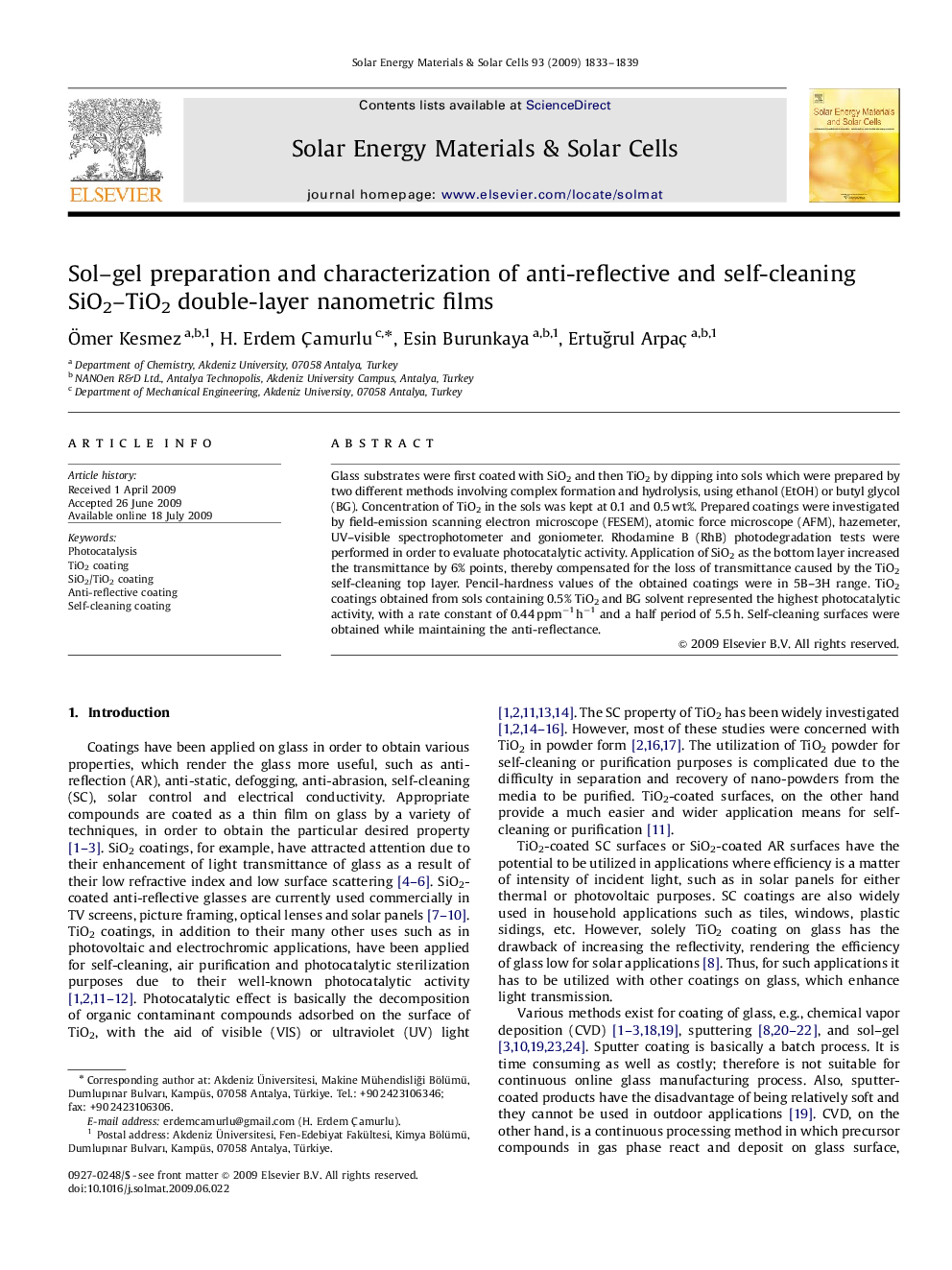| Article ID | Journal | Published Year | Pages | File Type |
|---|---|---|---|---|
| 79914 | Solar Energy Materials and Solar Cells | 2009 | 7 Pages |
Glass substrates were first coated with SiO2 and then TiO2 by dipping into sols which were prepared by two different methods involving complex formation and hydrolysis, using ethanol (EtOH) or butyl glycol (BG). Concentration of TiO2 in the sols was kept at 0.1 and 0.5 wt%. Prepared coatings were investigated by field-emission scanning electron microscope (FESEM), atomic force microscope (AFM), hazemeter, UV–visible spectrophotometer and goniometer. Rhodamine B (RhB) photodegradation tests were performed in order to evaluate photocatalytic activity. Application of SiO2 as the bottom layer increased the transmittance by 6% points, thereby compensated for the loss of transmittance caused by the TiO2 self-cleaning top layer. Pencil-hardness values of the obtained coatings were in 5B–3H range. TiO2 coatings obtained from sols containing 0.5% TiO2 and BG solvent represented the highest photocatalytic activity, with a rate constant of 0.44 ppm−1 h−1 and a half period of 5.5 h. Self-cleaning surfaces were obtained while maintaining the anti-reflectance.
